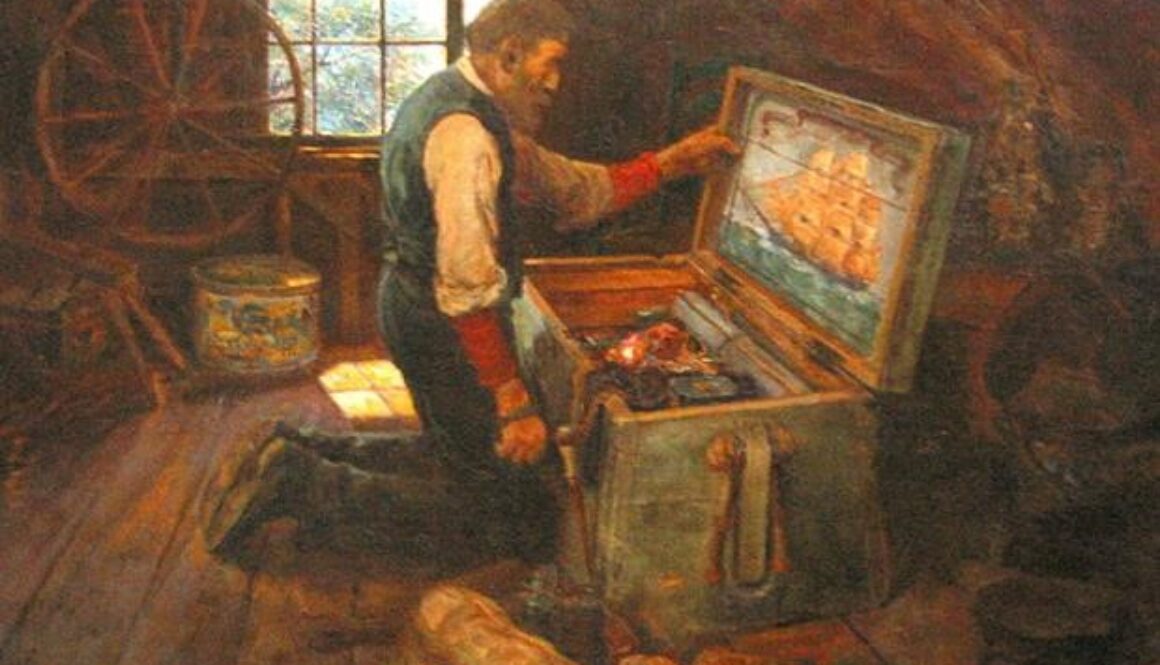Coiling Puzzle Winners!
Last week I posted our first Official Blog Puzzle:
“The photograph at the top of this post shows a small coil of rope lying on deck. You are looking down on it. The part leading in from the left is coming from the belay, and there is a figure-8 knot in the bitter end. Given those conditions, there are two things very wrong with this picture. The problem isn’t that the rope is hand-made, and thus a bit irregular, nor is it that gouty knot. If you think you know at least one answer, send it in to puzzle@briontoss.com. If you think you know both answers, send both; no penalty for incorrect answers, so feel free to speculate. Bonus points if you can find the ABK citations for the answers.”
Thanks to all of you who responded! Not everyone had the right answers, but a lot of you exhibited a courageous/intrigued/imaginative willingness to put forward ideas. Blessings on you.
And now to the answers. The first thing wrong with the picture is that the rope in the coil is left-laid, but the coil is made clockwise. Right-laid rope should be coiled clockwise, as it is less liable to hockle or tangle when it runs, because the twist of the rope will get looser, not tighter as the rope straightens. For the same reason, left-laid rope should be coiled counterclockwise. Left-laid rope is quite rare, and many people don’t even recognize it when they see it. Some entrants identified the rope in the picture as “hawser-laid,” and I had to disqualify that answer. While it is true that hawser-laid rope is conventionally left-laid, it is also made up of three or more whole smaller ropes. But the rope in the picture is not made up of smaller ropes, but of yarns that have been twisted together to form strands. It’s just plain old rope.
The second thing wrong with the picture is that the bitter end is on top of the coil. This makes the coil much more likely to tangle when it runs. Always lay a coil on deck “face down,” i.e. with the end on the bottom, to minimize the likelihood of tangling. Some entrants said that the end should be coming up through the middle of the coil, but this is only true for a multilayered factory coil, and even then it matters which end of the coil you pull from.
The winner of the one-correct-answer group is….. Joe Schmidbauer, who wrote, “This is S-laid rope and should be coiled in the opposite direction.” S-laid is the modern usage equivalent of left-laid, taken from the angle formed by the central portion of the letter S. In this usage, right-laid rope is Z-laid. For more on this and much else about rope, see https://en.wikipedia.org/wiki/Rope.
Joe — and lots of other people — noted that the bitter end lacked a whipping or other pleasing finish, but I don’t see this as structurally wrong, just crude. As Dustin Higdon put it in his entry, “I don’t know if it’s technically ‘wrong’ but it’s certainly poor form.”
Congratulations Joe. Be in touch to tell me which DVD you want.
The winner of the both-correct-answers group is…. Andrew Schmitz. Andrew’s entry was downright scholarly in its completeness, so I will just show the pertinent parts here:
1) The line shown is left hand lay, so the coil should be coiled counter clockwise, rather than clockwise as shown.
2) The coil should be flipped over on deck, such that the running end, from the belay, leads to the top of the coil. If the line needs to run, the coil as shown will more likely foul than if the coil is flipped, so that the running end feeds off the top of the coil.
extra credit: the rope is unlayed at the stopper knot in a very “lubberly” fashion. It would be more ship shape to have a whipping on the end of the line.
as for citations:
on page 512 in the beginning of chapter 40 Ashley tells us “Right hand, or plain-laid, rope is properly coiled clockwise…”
ABK 3086 instructs us to lay a coil face down such that it runs clear
page 605 in the glossary: the definition of with the lay, or with the sun, in reference to coiling a right hand laid rope clockwise
To that I will add Ashley’s #3317: “On some smart naval craft the knots were at the forward hole of the deadeye on both sides of the ship, left-laid rigging being used on the port side. If cable-laid rigging were used, all the knots were on the right side of the deadeye.” How’s that for deeply obscure rope geek info?
Andy, let me know how you would like that book personalized.
Given the enthusiastic response this puzzle had, I intend to post some more. If you’d like to join the party, write to puzzle@briontoss.com with your ideas.
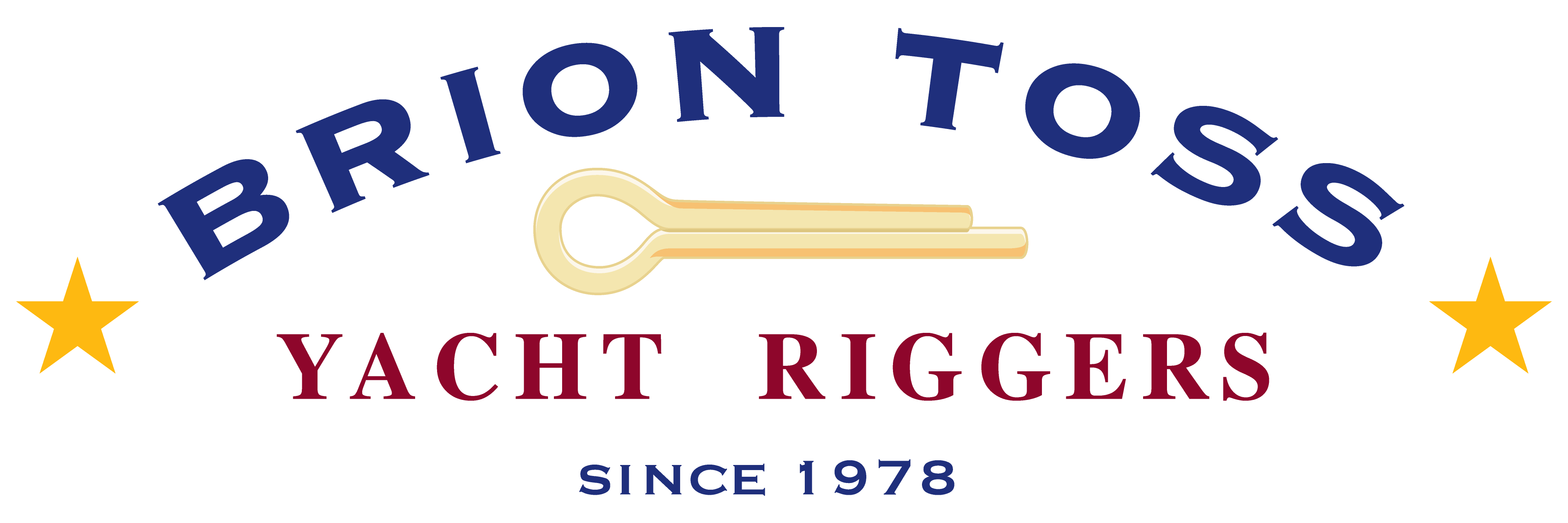
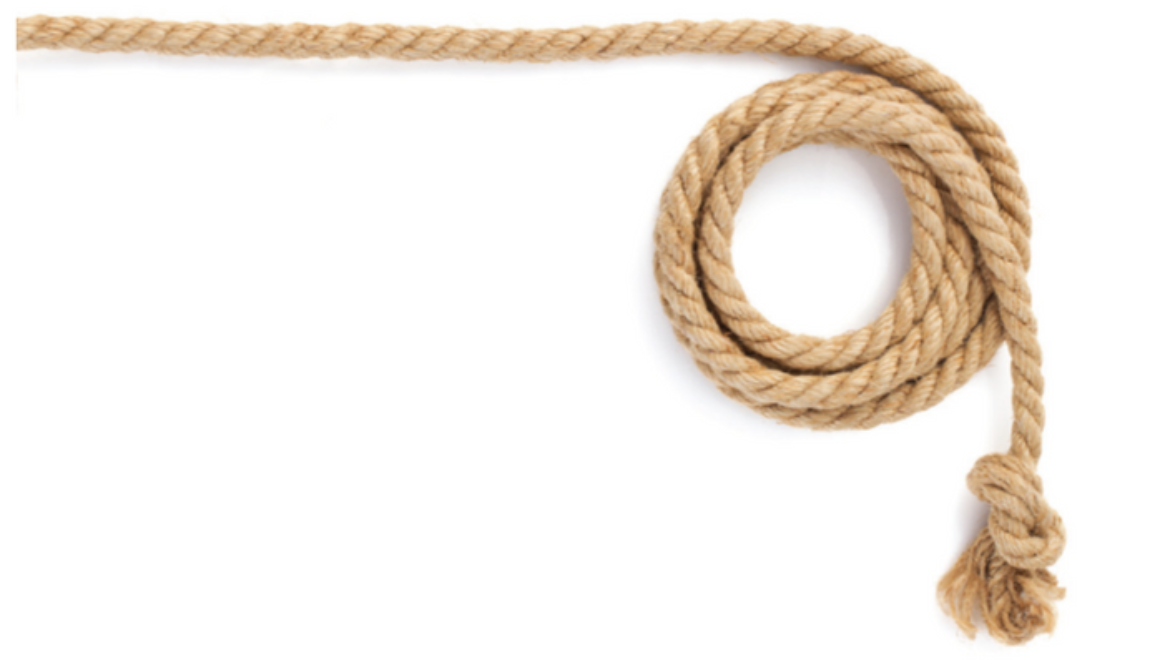
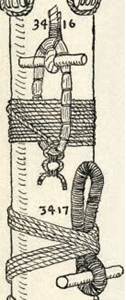
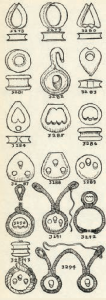
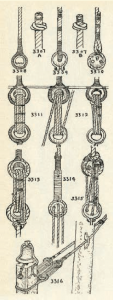
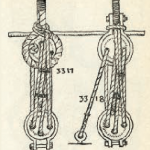
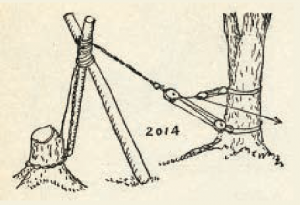
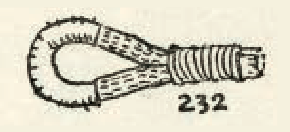
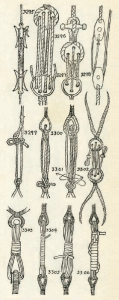
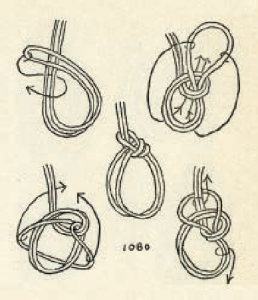
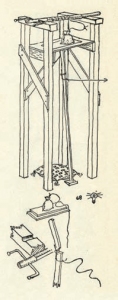
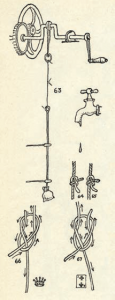
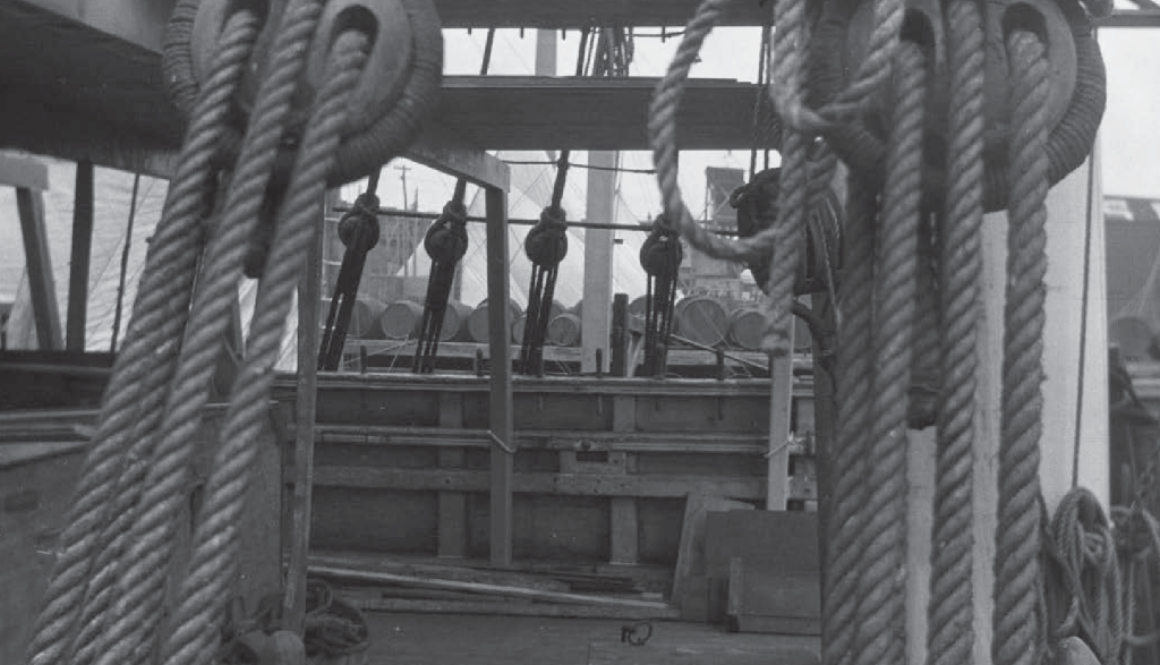
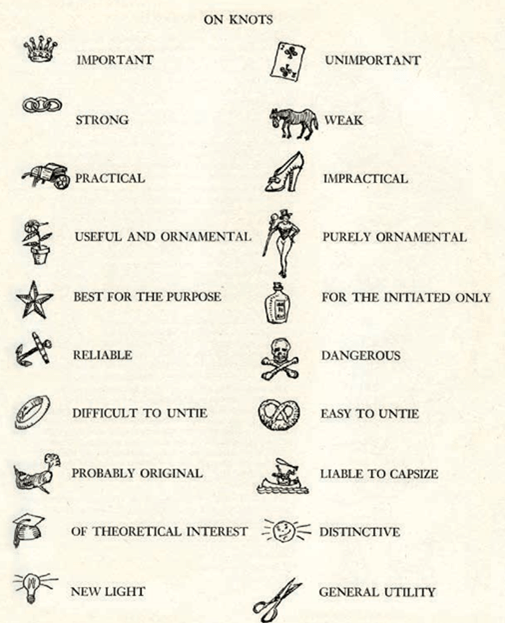
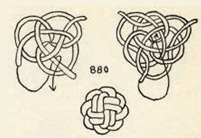 Two other examples of database adaptations are the knife lanyard knot (#787), and an original button (#880). Both of these knots were originally meant to be primarily decorative, and they are indeed lovely things. But a few years ago, riggers began making “soft shackles” in Spectra/Dyneema. These fabulously strong button-and-becket constructions have displaced steel shackles in many applications. A soft shackle that terminates in a lanyard knot, properly tied, can be counted on to hold at over 100% of the strength of the cord- age it is tied in. And the version that terminates in a two-strand version of the #880 will hold at close to 200%.
Two other examples of database adaptations are the knife lanyard knot (#787), and an original button (#880). Both of these knots were originally meant to be primarily decorative, and they are indeed lovely things. But a few years ago, riggers began making “soft shackles” in Spectra/Dyneema. These fabulously strong button-and-becket constructions have displaced steel shackles in many applications. A soft shackle that terminates in a lanyard knot, properly tied, can be counted on to hold at over 100% of the strength of the cord- age it is tied in. And the version that terminates in a two-strand version of the #880 will hold at close to 200%. made around a block with 3-strand rope. Contemporary riggers simply adapted the structure to 12-strand braided rope, and gave it the option of an adjustable eye.
made around a block with 3-strand rope. Contemporary riggers simply adapted the structure to 12-strand braided rope, and gave it the option of an adjustable eye.